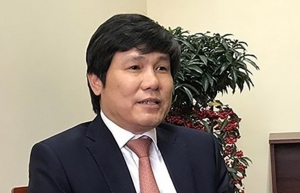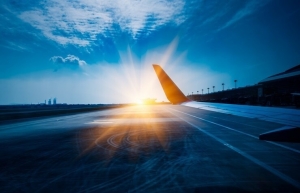Recovery challenges ahead for Vietnamese aviation
According to the Civil Aviation Authority of Vietnam (CAAV), Vietnam welcomed a total of 38.1 million passengers in the first half of 2024, up 6.7 per cent on-year. Of the total, international tourist arrivals reached 21 million, up 44 per cent on-year. However, domestic tourist arrivals hit 17 million, down over 19 per cent from the same period last year.
 |
| Tran Tuan Phong, co-head, Infrastructure Working Group, Vietnam Business Forum |
As of the summer 2024 flight schedule, 63 foreign airlines and four Vietnamese air carriers have completely resumed their international flight networks and continue to expand into new markets in Central Asia, India, and Australia to meet the travel demands of domestic and international passengers.
According to a report by the World Economic Forum published this May, the tourism industry is expected to recover this year, with global tourist arrivals exceeding pre-2020 levels.
Despite these advantages, the local aviation industry is facing challenges on its recovery path. The global and domestic economies are forecast to still experience a slowdown this year.
Production activities, from industrial output to investment and international trade activities, have decreased. Increasing geopolitical instability and slowly decreasing inflation force most countries to continue tightening monetary policy. The world economic outlook in 2024 is forecast to have a weak recovery at 2.7 per cent and will face many major risks and challenges due to complicated developments after the pandemic.
In this situation, Vietnamese air carriers themselves are struggling with their difficulties. The recent lack of aircraft due to technical recalls has prevented them from increasing their profit and revenue as expected, although they have strived to take several measures and solutions to increase the efficiency of aircraft operation and increase supply capacity to meet people’s travel needs.
As a result, Vietnamese airlines have had to adjust and reduce flights on domestic routes. This is also the reason why the domestic market saw a drop in the number of domestic tourist arrivals in the first six months.
However, the reason behind the lower-than-expected performance of air carriers in Vietnam is the way they operate, and their own policies. For instance, the pricing policy remains a concern. Many airlines increased airfares to cover losses, blaming the action on a lack of aircraft. In fact, the pricing policy makes them less competitive than other airlines.
Rising fuel prices, the lack of aircraft, and foreign exchange rate differences caused difficulties for airlines, but they would not have been as affected if they had suitable development strategies and industry policies in place. For instance, many units are leasing aircraft, and many airlines globally chose this approach and still recovered well.
In the past six months, controlling airfares and increasing the supply of aircraft are two important issues that the CAAV has raised to ensure the balance of benefits between consumers and the development of the industry. However, to accomplish this, it requires not only the aviation industry’s efforts but also many accompanying policies and synchronous mechanisms.
The country should have new policies to help airlines increase competitiveness while changing traditional operational ways. In addition, there should be open policies to encourage private domestic and foreign investors and businesses to join the country’s aviation development.
Different countries have had different experiences in increasing the competitiveness of their airlines. Some regional countries had similar problems to Vietnam, but they had stimulation policies to help them overcome periods of weak travel demand.
For example, they asked airlines to reduce prices to encourage travel among domestic and international passengers, thus enabling them to increase flight occupancy and revenues while helping airports increase their service revenues. This ensures the balance of interests between airports and airlines.
Another important factor should be changing the mindset of flight operation. Instead of focusing only on big markets and major destinations, tapping into the potential of niche markets can be a way out. Vietjet is a good example, as it is expanding niche markets and areas connecting to tourism destinations in East Asia, Europe, India, and Australia. These markets are increasingly attractive to international travellers in recent times.
Global uncertainties will continue in the months to come, and safety scandals related to Boeing might not be resolved overnight and might continue to affect airlines. Therefore, they should have varied scenarios for difficult situations to continue growing.
 | Aircraft shortage should pose no effect on aviation recovery Vietnam’s aviation industry is being affected by an apparent shortfall of aircraft. Dinh Viet Thang, head of the Civil Aviation Authority of Vietnam, talked to VIR’s Thuy Nguyen about the reason behind the scenes and the possible solutions ahead to stabilise the market. |
 | Momentum created for aviation industry The increasing demand for aircraft components in the context of leading global aircraft manufacturers consistently facing order backlogs opens up opportunities for Vietnamese businesses to participate more deeply in the supply chain. |
What the stars mean:
★ Poor ★ ★ Promising ★★★ Good ★★★★ Very good ★★★★★ Exceptional
Related Contents
Latest News
More News
- Main drivers for Vietnam’s digital economy future (December 03, 2025 | 11:35)
- Pivotal stage of growth paves way for rise in M&As (December 03, 2025 | 10:00)
- Positive projections for M&A interest from Thailand (December 03, 2025 | 09:40)
- Manifesting the first line of defence in cybersecurity (December 03, 2025 | 09:00)
- The transformational role AI can play in accounting arena (December 03, 2025 | 08:00)
- Unlocking 5G-AI potential in Singapore (December 03, 2025 | 08:00)
- Data-driven strategies vital for a fast-evolving nation (December 02, 2025 | 09:41)
- Policy to practice: how Vietnam can lead the region (November 26, 2025 | 16:03)
- Mobilising private capital at scale vital for climate battle (November 26, 2025 | 15:36)
- VILAF and Yoon & Yang launch Vietnam - Korea Practice Unit (November 26, 2025 | 15:16)

 Tag:
Tag:





















 Mobile Version
Mobile Version